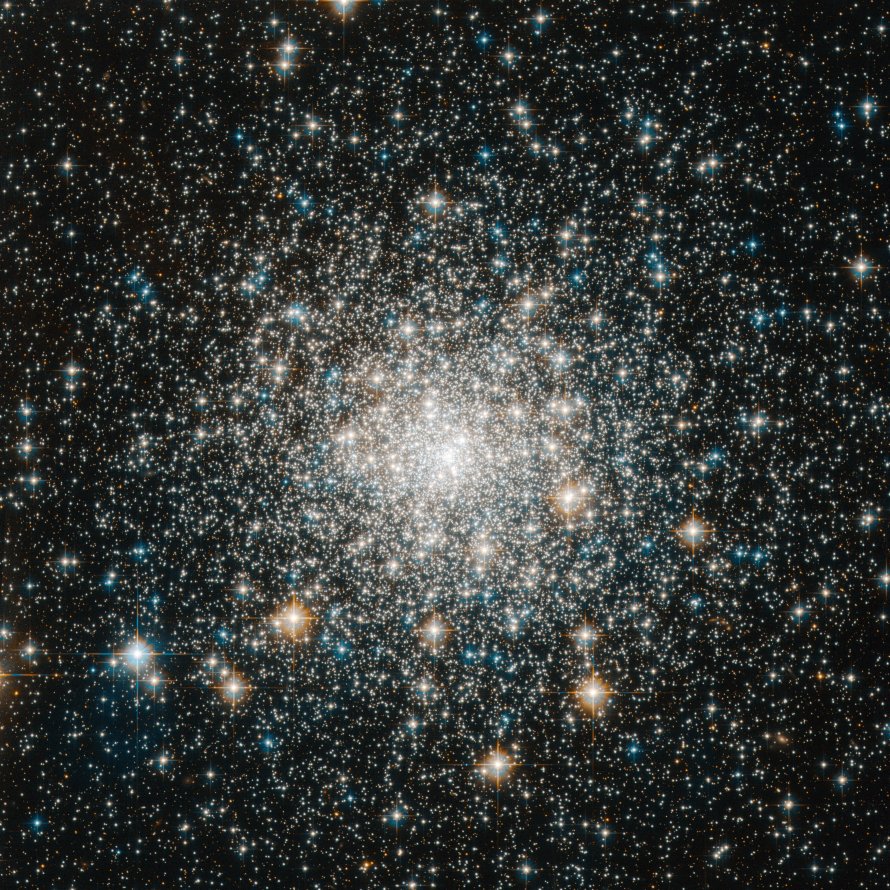M70 (NGC 6681)
Messier 70 (NGC 6681) is a globular cluster located in the constellation Sagittarius, in the Galactic Center of the Milky Way Galaxy in the Local Group of galaxies. M70 is 29400 light years away from Earth.
M70 is best viewed during late summer, is magnitude 9, and can be viewed with binoculars. M70 is 8' in apparent size. For reference, the full moon is 30'.
Observing difficulty: Intermediate
- Name:
- Type:
- globular cluster
- Constellation:
- Sagittarius
- NGC or IC:
- NGC 6681
- Magnitude:
- 9
- Viewing:
- binoculars
- Size:
- 8'
- Distance (light years):
- 29400 LY
- RA:
- 18h 43.2m
- Dec:
- -32 18'
- Season:
- late summer
- Milky Way location:
- Galactic Center
- Galaxy group:
- Local Group
- Messier Marathon #:
- 102
* The naked eye can see up to magnitude ~7-8 objects under ideal dark sky conditions.
A Compact Globular Cluster in Sagittarius
Messier 70, also known as M70 or NGC 6681, is a compact globular cluster located in the constellation Sagittarius. It was discovered by Charles Messier in August 1780. This celestial wonder is nestled within the dense star fields of the Milky Way, and it's approximately 29,300 light-years away from our Solar System. Positioned near the galactic center, it's one of the many globular clusters that belong to our Milky Way galaxy.
Characteristics of M70
With a high concentration class V, M70 is a fairly dense globular cluster, but it's not as compact as some others. Its stellar population is similar to other globular clusters, containing older, evolved stars. The age of M70 is estimated to be around 12.8 billion years, making it one of the older known clusters.
Of interest to astronomers, M70 was the site of the 1995 discovery of a specific type of variable star, known as an RR Lyrae variable. These stars have periods of brightness change that are related to their absolute magnitude, and thus can be used as "standard candles" to measure cosmic distances.
Magnitude and Size
M70 has an apparent magnitude of around 9.06, which means it is not visible to the unaided eye but can be seen with a small telescope or good binoculars. The cluster spans about 8 arc minutes in diameter, which corresponds to a spatial diameter of roughly 68 light-years. Despite its relatively small size and somewhat faint magnitude, M70 is a fascinating object to observe given its density and age.
Finding and Viewing M70
Located in Sagittarius, M70 is best viewed in the summer months when this constellation is prominent in the sky. The cluster lies in the southern sky for northern observers, so a clear southern horizon is beneficial for observations.
To find M70, one can use the teapot asterism in Sagittarius. Start with the star Kaus Australis, which forms the tip of the teapot's spout, then move about 4 degrees to the northeast. M70 and its nearby counterpart, M69, can often be viewed in the same field of view with a low-power eyepiece, making for a delightful pairing.
While M70 will appear as a faint, fuzzy star through binoculars, a modest telescope will resolve the outer edges into a granular texture. However, due to the cluster's dense core, only larger telescopes will be able to resolve individual stars at the center.
In summary, M70 may not be the most famous globular cluster, but its old age, rich history, and location near M69 make it a worthwhile observation target for both novice stargazers and seasoned astronomers alike.



